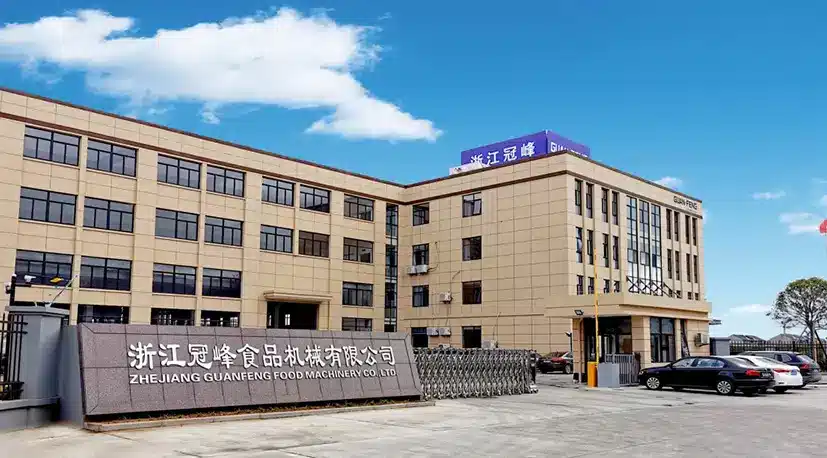BLOG
Focus on hot topics, real-time dynamics
Understanding the Working Principles of a Lyophilizer Machine: A Comprehensive Guide
Understanding the Working Principles of a Lyophilizer Machine
Table of Contents
- 1. Introduction to Lyophilization
- 2. What Is a Lyophilizer Machine?
- 3. How Does a Lyophilizer Work?
- 4. Key Components of a Lyophilizer Machine
- 5. The Process of Lyophilization Explained
- 6. Applications of Lyophilizer Machines in Life Sciences
- 7. Advantages and Disadvantages of Lyophilizers
- 8. Maintenance Tips for Lyophilizer Machines
- 9. Conclusion
- 10. Frequently Asked Questions
1. Introduction to Lyophilization
In the realm of **life sciences**, the need for preserving biological materials is paramount. The method of **lyophilization**, or freeze-drying, has emerged as a revolutionary technique for preserving sensitive compounds without compromising their integrity. This process removes moisture from materials, allowing them to be stored and transported more easily while maintaining their biological activity.
2. What Is a Lyophilizer Machine?
A **lyophilizer machine**, also known as a freeze dryer, is a sophisticated piece of equipment designed to facilitate the lyophilization process. This machine works by freezing the sample, creating a vacuum environment, and then gradually removing the ice through sublimation. This process is crucial for preserving pharmaceuticals, proteins, and other sensitive biological materials that may degrade in the presence of moisture.
3. How Does a Lyophilizer Work?
The working principles of a lyophilizer center around **three main stages**: freezing, primary drying, and secondary drying.
3.1 Freezing Stage
In the first stage, the sample is rapidly frozen to form ice crystals. The temperature typically drops below the material's freezing point, ensuring that the water within the sample solidifies. Rapid freezing is crucial as it results in smaller ice crystals, which are preferable for later sublimation.
3.2 Primary Drying Stage
The primary drying phase involves the application of heat while maintaining a vacuum. The pressure reduction allows the ice to transition directly from solid to vapor, bypassing the liquid phase. This sublimation process is carefully controlled to prevent collapse of the material's structure.
3.3 Secondary Drying Stage
During secondary drying, the remaining bound water molecules are removed. This stage typically involves raising the temperature further to facilitate the desorption of water. The goal is to achieve a final product with minimal moisture content, ensuring long-term stability.
4. Key Components of a Lyophilizer Machine
Understanding the components of a lyophilizer machine is essential for comprehending its functionality. The key parts include:
4.1 Condenser
The condenser is responsible for collecting the vapor released during sublimation. It is cooled to a low temperature, allowing the vapor to re-freeze and form ice.
4.2 Vacuum Chamber
The vacuum chamber holds the samples during the lyophilization process. It creates a low-pressure environment that is crucial for sublimation.
4.3 Heating System
This system provides controlled heat to facilitate sublimation and desorption. Proper temperature control is vital for achieving optimal results.
4.4 Control System
The control system monitors and regulates the various parameters throughout the lyophilization process, ensuring consistency and reliability.
5. The Process of Lyophilization Explained
To gain a deeper understanding of lyophilization, let’s break down the process into detailed steps:
5.1 Sample Preparation
Before lyophilization begins, samples must be prepared appropriately. This may involve dilution, pH adjustment, or the addition of cryoprotectants to enhance stability.
5.2 Freezing
The samples are placed in pre-chilled vials or trays and rapidly frozen using a cooling system. This step is critical as it influences the size and morphology of ice crystals, directly impacting the quality of the final product.
5.3 Vacuum Application
Once frozen, the samples are placed in a vacuum chamber where the pressure is reduced. This step is essential for initiating the sublimation process.
5.4 Sublimation
Heat is applied to the samples, causing the ice to sublimate. This phase is closely monitored to ensure optimal conditions for moisture removal without degrading the sample.
5.5 Secondary Drying
Following primary drying, the temperature is increased further to eliminate any residual moisture, ensuring that the final product is sufficiently dried.
5.6 Packaging
Once the drying process is complete, the samples can be packaged in moisture-proof containers to maintain their stability during storage and transportation.
6. Applications of Lyophilizer Machines in Life Sciences
Lyophilizers have vast applications across various sectors, particularly in life sciences. Some key applications include:
6.1 Pharmaceutical Products
Lyophilization is extensively used for pharmaceuticals like vaccines, antibiotics, and biologics, as it helps maintain their efficacy and shelf life.
6.2 Nutraceuticals
The preservation of vitamins, probiotics, and other nutraceuticals through lyophilization ensures that their bioactivity remains intact.
6.3 Biological Samples
Research institutions often use lyophilization to preserve delicate biological samples, such as enzymes and antibodies, ensuring their availability for future studies.
6.4 Food Industry
In the food sector, lyophilization helps in preserving the taste and nutritional value of products. It allows for the creation of lightweight, shelf-stable food items.
7. Advantages and Disadvantages of Lyophilizers
While lyophilizers offer numerous benefits, it is essential to consider both their advantages and potential drawbacks.
7.1 Advantages
- **Preservation of Nutritional Value**: Lyophilization maintains the nutrients and bioactive compounds in the material, ensuring product quality.
- **Extended Shelf Life**: The removal of moisture significantly extends the shelf life of products, allowing for long-term storage.
- **Lightweight Products**: Freeze-dried items are typically lightweight, making them easier to transport.
7.2 Disadvantages
- **High Initial Cost**: Lyophilizers tend to be expensive, which may be a barrier for small businesses.
- **Complex Process**: The lyophilization process requires precise control and monitoring, which can be challenging.
- **Potential for Heat Sensitivity**: Some materials may be sensitive to heat, raising concerns about potential degradation during the drying process.
8. Maintenance Tips for Lyophilizer Machines
Proper maintenance of lyophilizer machines is crucial for ensuring their longevity and performance. Here are some essential tips:
8.1 Regular Cleaning
Ensure that all parts of the lyophilizer, especially the condenser and vacuum chamber, are cleaned regularly to prevent contamination and maintain optimal performance.
8.2 Calibration
Regularly calibrate the temperature and pressure settings of the machine to ensure accurate and consistent results.
8.3 Inspection
Conduct routine inspections to identify and address any potential issues before they escalate, ensuring the machine operates smoothly.
8.4 Professional Servicing
Schedule professional servicing at least once a year to maintain efficiency and compliance with safety regulations.
9. Conclusion
Lyophilization is a pivotal process in the life sciences industry, and understanding the working principles of a lyophilizer machine is essential for professionals in this field. By grasping the intricacies of how these machines function, their key components, and their applications, one can appreciate their significance in preserving sensitive biological materials. With careful maintenance and proper usage, lyophilizers can play a crucial role in ensuring the stability and efficacy of vital products.
10. Frequently Asked Questions
10.1 What materials can be lyophilized?
Most biological materials, pharmaceuticals, and some food products can be effectively lyophilized, including proteins, enzymes, and vaccines.
10.2 How does freeze-drying differ from traditional drying methods?
Freeze-drying removes moisture by sublimation, preserving the material's structure and activity, whereas traditional drying methods may involve high temperatures that can damage sensitive compounds.
10.3 How long does the lyophilization process take?
The time required for lyophilization varies based on the material and equipment used, typically ranging from several hours to days.
10.4 Are there any safety concerns with lyophilizers?
Yes, safety concerns primarily involve the handling of cryogenic materials and the maintenance of vacuum systems. Proper training and adherence to safety protocols are essential.
10.5 Can lyophilizers be used for large-scale production?
Yes, many lyophilizers are designed for large-scale production, making them suitable for pharmaceutical manufacturing and other large-volume applications.
Hot Tags:
Contact Us
E-mail:
sales@syguanfeng.com
Tel:
+86 15088506234
Address:
South Industrial Park of Dongguan, Shangyu District, Shaoxing City,Zhejiang Province,China.
GUANFENG, your customization experts!
GUANFENG FOOD MACHINERY - leading supplier of integrated food processing solutions
Copyright© 2024 ZHEJIANG GUANFENG FOOD MACHINERY CO.,LTD.










